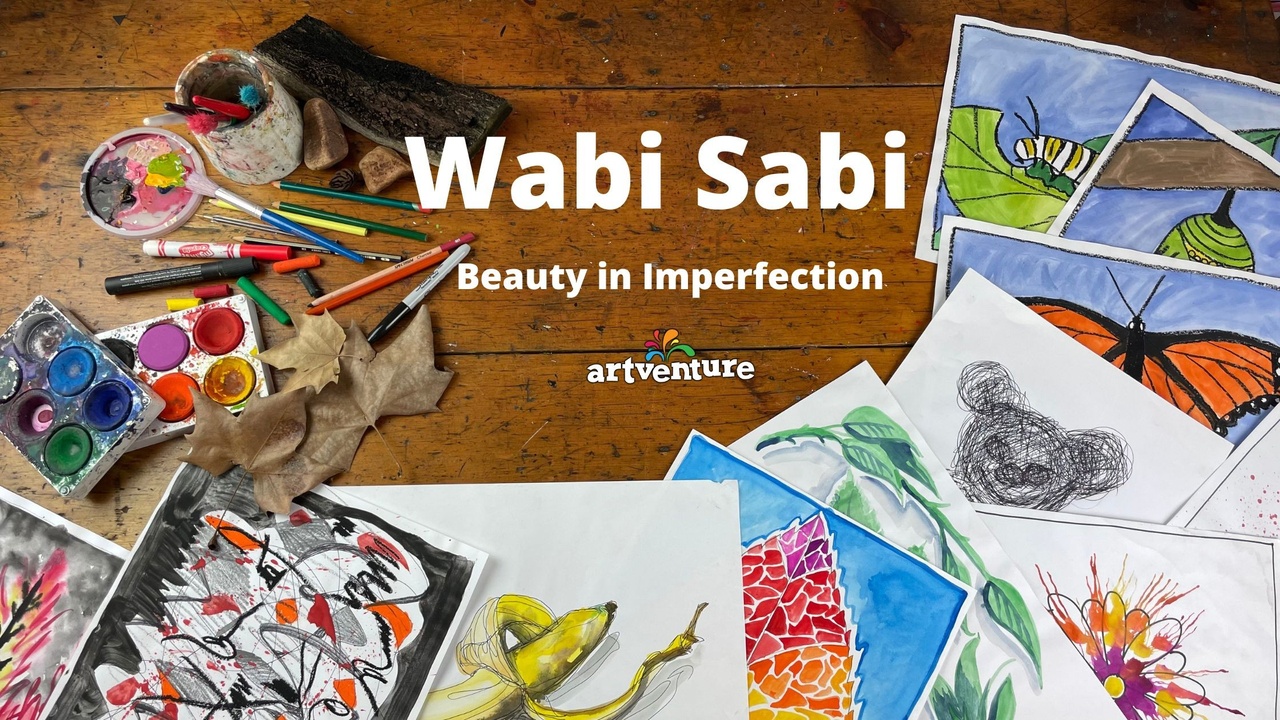Wabi-Sabi for Kids: Finding Beauty in Imperfection Through Art
May 09, 2022
Wabi-Sabi and Wasabi – What’s the Difference?
Hmmm... Wabi Sabi and Wasabi? Just to clarify — both originate in Japan, and both have a connection with nature. Wasabi is a spicy plant used in food. Wabi-Sabi, on the other hand, is a sensitive approach to aesthetics — a way of seeing beauty in imperfection, often drawn from nature.
But it’s the relevance of Wabi-Sabi to children’s art education that has piqued my interest here.
How Wabi-Sabi Connects with the Australian Curriculum
Key elements of the Australian Curriculum: The Arts focus on making and reflecting. Visual Arts supports students to “view the world through various lenses and contexts” and to “develop understanding of world culture”.
Meanwhile, Health and Physical Education encourages participation in activities that improve wellbeing — including mindful creative activities.
As I learned more about Wabi-Sabi, I realised how beautifully it aligns with these goals: observing, reflecting, accepting, and appreciating the world — particularly through nature. There’s potential for mindfulness and art integration here that is perfect for schools and families alike.
The Japanese Aesthetic of Imperfection
Wabi-Sabi is a traditional Japanese aesthetic that values the beauty in imperfection, mistakes, and natural change. It’s different from the Western ideal of beauty through perfection.
I love this idea — especially when we’re encouraging children to:
-
Take risks with their artwork
-
Experiment with materials
-
Make mistakes and learn from them
Sometimes the journey is more powerful than the finished artwork.
One resource that helped me understand this better was a British documentary by Marcel Theroux, who traveled across Japan to explore Wabi-Sabi. Language wasn’t enough to define it — it’s a feeling, a spiritual and cultural expression rooted in Japanese Zen and the Tea Ceremony.
Wabi: Living Mindfully and Simply
Wabi is about decluttering — physically and mentally. It’s about simplicity, essentials, and living in the moment.
For children, this might look like:
-
Having fewer toys visible at once
-
Rotating items to refresh engagement
-
Creating calm environments at home or in classrooms
It’s about helping children focus, be present, and appreciate what’s in front of them.
Sabi: Accepting the Beauty of Change
Sabi is the natural passage of time — appreciating how things age, decay, and transform.
Nature is at its core. Children can observe:
-
Autumn leaves as they fade and fall
-
Bare winter trees or driftwood on the beach
-
New growth in spring
-
Cracked earth in summer
Sabi encourages us to notice the world around us and see beauty in change — a valuable concept in both emotional development and artistic expression.
Wabi-Sabi Together: Nature-Inspired Art Projects for Kids
When Wabi and Sabi are combined, we discover a gentle philosophy that helps us:
-
Slow down
-
Focus on what really matters
-
Find peace in imperfection and change
This mindset is powerful for children — especially when expressed through art projects connected to nature.
Bringing Wabi-Sabi into Kids’ Art
Art activities grounded in Wabi-Sabi can be:
-
Dioramas made from leaves, bark, and recycled materials
-
Nature creatures made from paper rolls and natural objects
-
Drawing sessions outdoors — under a tree, at the beach, or in a garden
-
Art lessons about the seasons or weather using mixed media
Ask children:
-
What do they notice around them?
-
What do they find beautiful even if it’s old or broken?
-
How does it feel to create something imperfect?
🎨 Artventure offers many lessons inspired by nature — from autumn trees and leaves to weather, seasons, and plants. These can easily complement Wabi-Sabi-inspired projects at school or home.
Final Thoughts: Let’s Embrace Imperfection
With a dash of Wabi-Sabi, we can teach children (and remind ourselves) to:
-
Accept mistakes
-
Value the process over the result
-
Find beauty in unexpected places
Let’s walk gently with nature — and find creative joy in what is imperfectly perfect.
—
Erica
Teacher and Artventure Blogger

